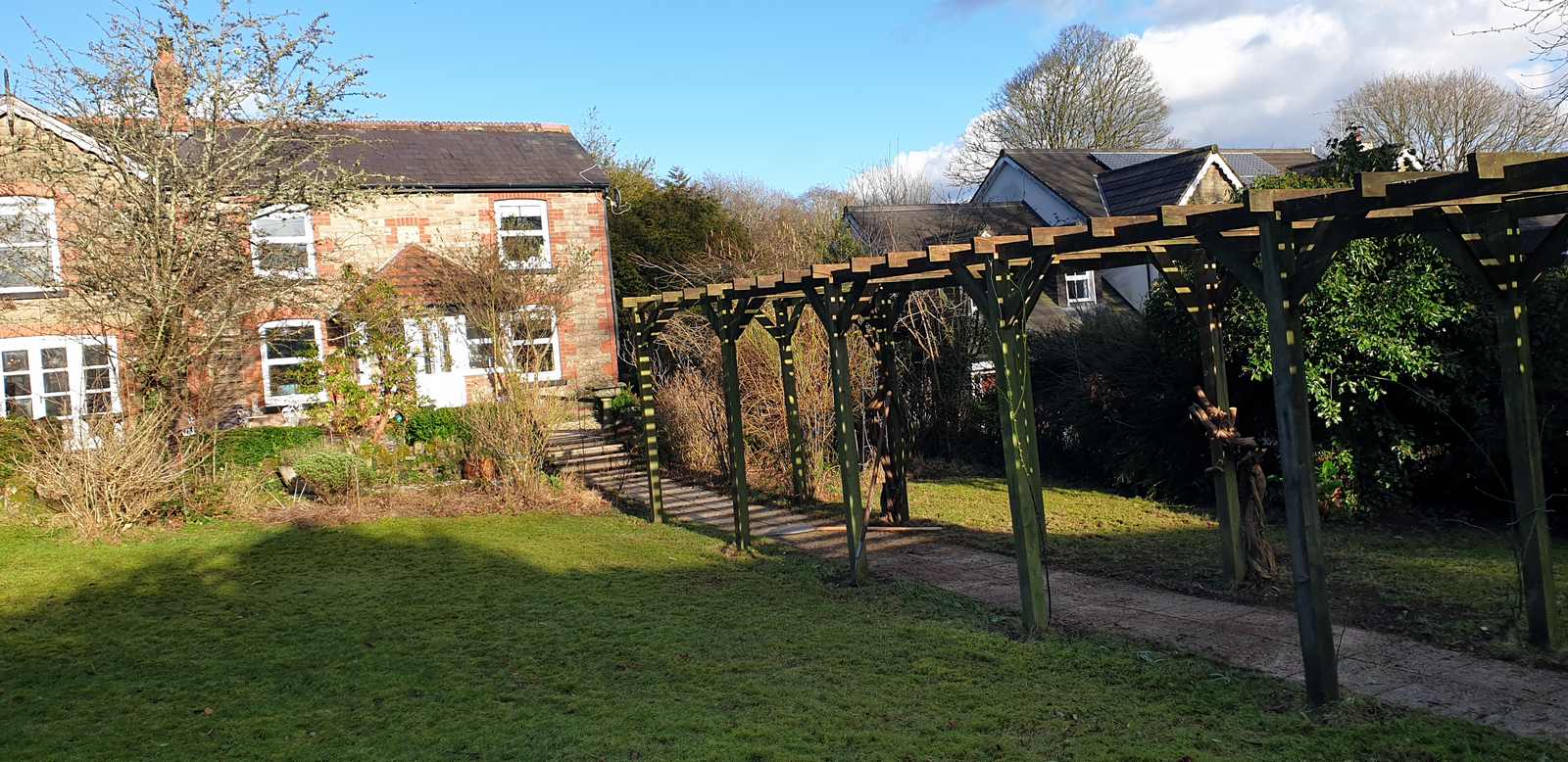Pruning Climbers on a Pergola
A hillside village above Tintern in the Wye Valley Area of Outstanding Natural Beauty. The property’s entrance path runs under a good sized pergola, planted up with roses, honeysuckle and an unwelcoming Pyracantha. In the absence of some routine pruning and training these climbers had developed into a foreboding and impenetrable thicket.
Sometimes it is possible to carry out sensitive renewal or renovation pruning; cutting out dead, diseased and damaged wood and training in the healthy wood for flower and form. Other times, the only practical option is to start again, unleashing a merciless arsenal of hedgecutters, loppers and secateurs.

Although we talked to the client about the possibilities of a selective pruning & training, it was agreed that a thorough renovation would probably be the only practical approach – though the reality of the end result can seem quite brutal in spite of all the warnings!
The honeysuckle and rambling rose will all grow back and flower, and with annual training, such an aggressive cut back shouldn’t be needed again.
Climbers for a Pergola
Rambling roses are always recommended for pergolas. I have mixed feeling about this as they need proper annual pruning and tying in and the pergola needs to be a good width and height to accommodate such vigorous and thorny malcontents.
Clematis, climbing roses, grapevines, Schizophragma hydrangeoides, Akebia quintata, Jasmine, Campsis, Wisteria. A long list of plants for all situations.
This is from a pergola we used to look after in a Georgian property in Abbotts Leigh on the outskirts of Bristol.
Below Clematis, Rose and Grapevine in Monmouthshire











